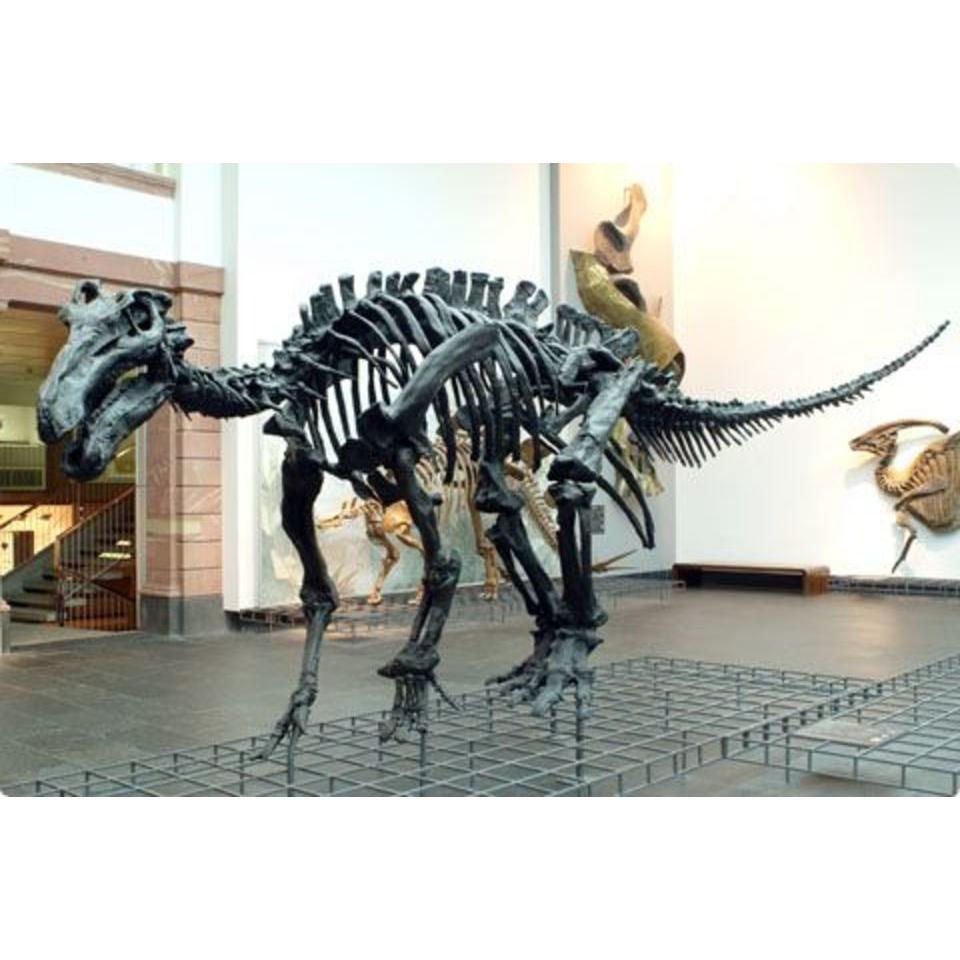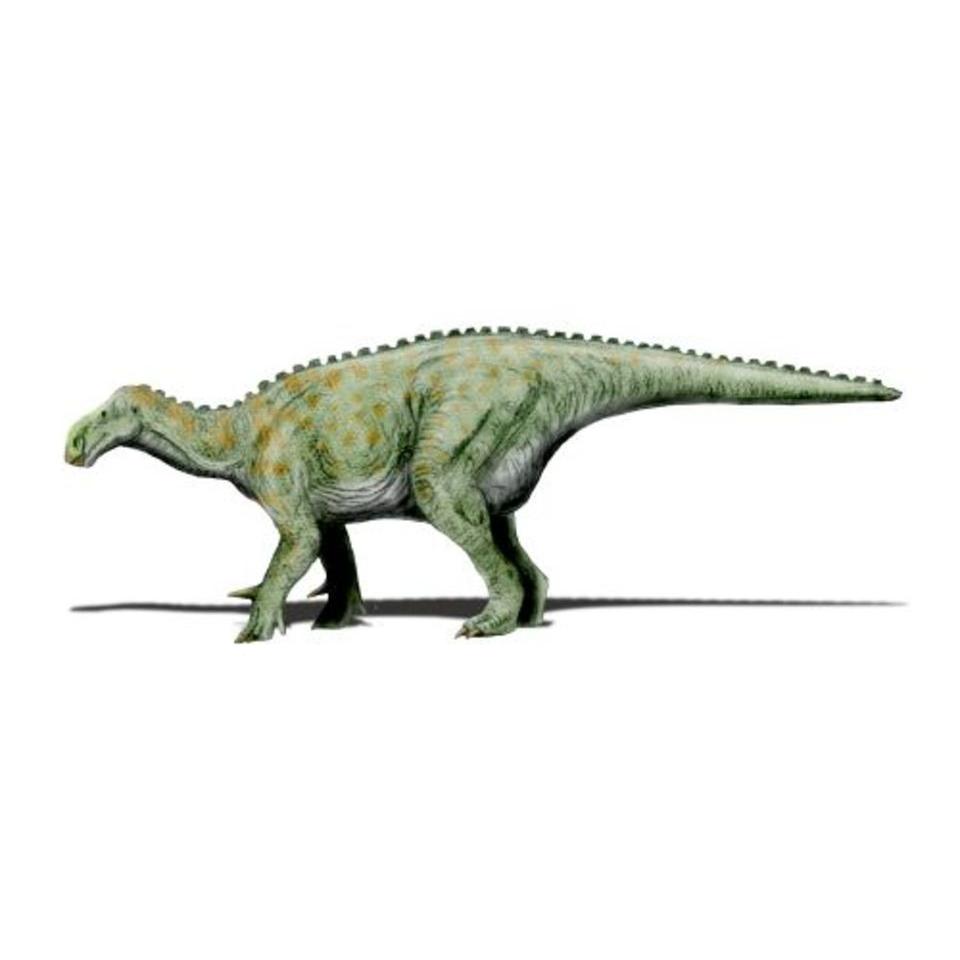Iguanodon isn’t a single dinosaur — it’s a dinosaur genus that contains multiple species, all of which had four legs and ate plants. Most grew to be about 30 feet long. Today, there’s some controversy about Iguanodon. Some paleontologists argue that many of the dinosaurs known as Iguanodon are classified incorrectly, leaving only one or two true Iguanodon species. Mary Ann Mantell discovered the first Iguanodon fossil — a tooth — in Sussex, England, in 1820, before the word “dinosaur” even existed.
She decided that the tooth looked like a larger version of an iguana tooth, so she named the specimen Iguanodon. It wasn’t until later that paleontologists discovered a more complete skeleton, allowing Mantell to learn what kind of animal her tooth belonged to. The tooth now resides in at Te Papa Museum in New Zealand. One of the most distinctive traits of dinosaurs in the Iguanodon genus is a large, spiky thumb. This thumb looked so much like a horn that the first representations of the dinosaur placed it on the nose, not on the hand. The thumb wasn’t particularly flexible or mobile, meaning it probably didn’t do much to help the creature collect its leafy food. Instead, Iguanodon may have used its spike to defend itself against predators. Since its discovery in 1820, scientists’ portrayal of these dinosaurs has changed significantly. Many early representations showed Iguanodon as a biped, walking only on its back legs. But further study of Iguanodon fossils has revealed that they probably had the ability to stand on two legs but also spent a lot of time on all fours. The biggest piece of evidence is the three middle fingers, each of which resembles a hoof. Dinosaurs in the Iguanodon genus didn’t have front teeth. Instead, they gathered foliage with their beak-like mouths and used their back teeth to chew. In 1878, fossils of 31 adult Iguanodon were found in a coal mine in Belgium. Most likely, these animals were either traveling or living together, which suggests that Iguanodon lived in herds.


